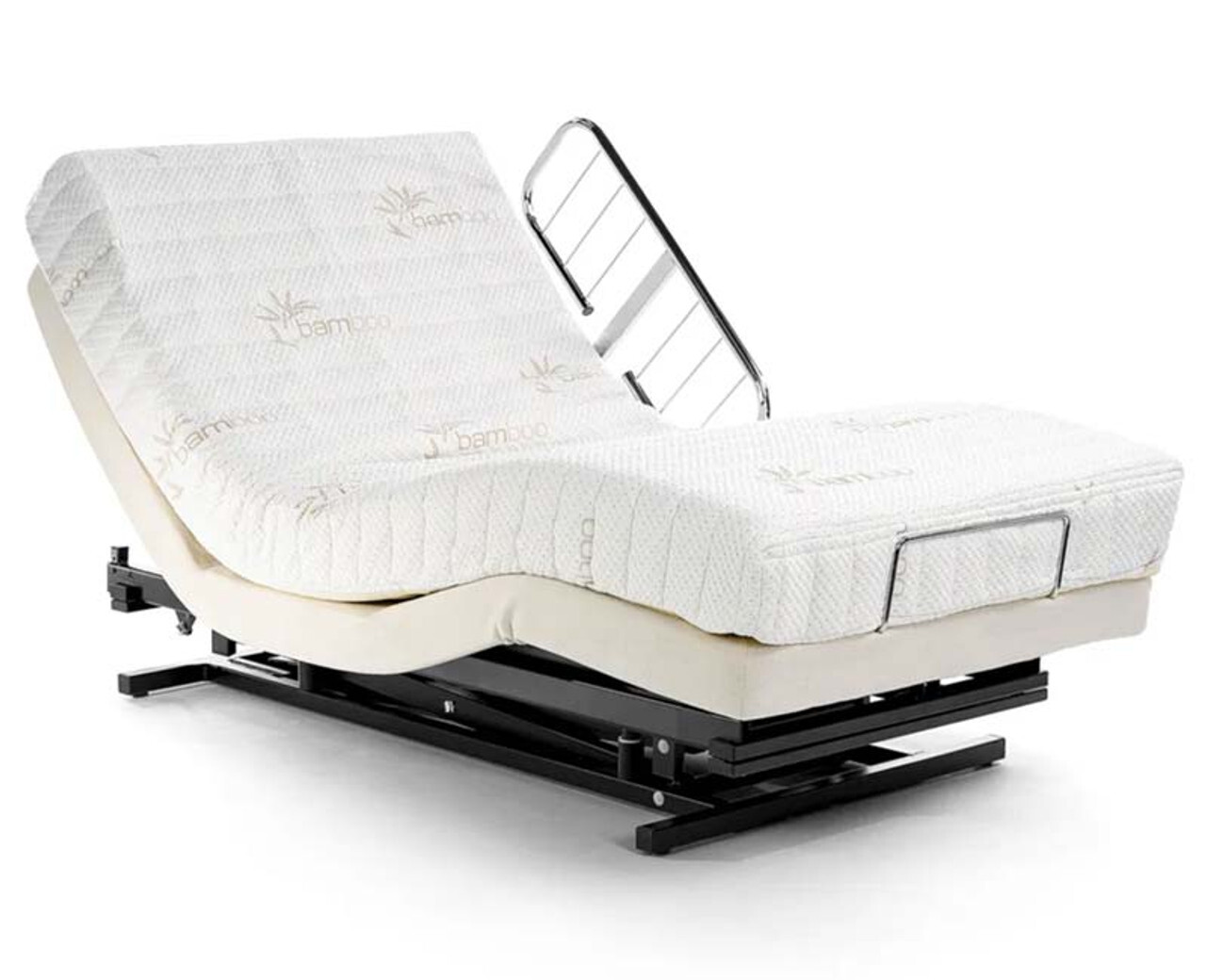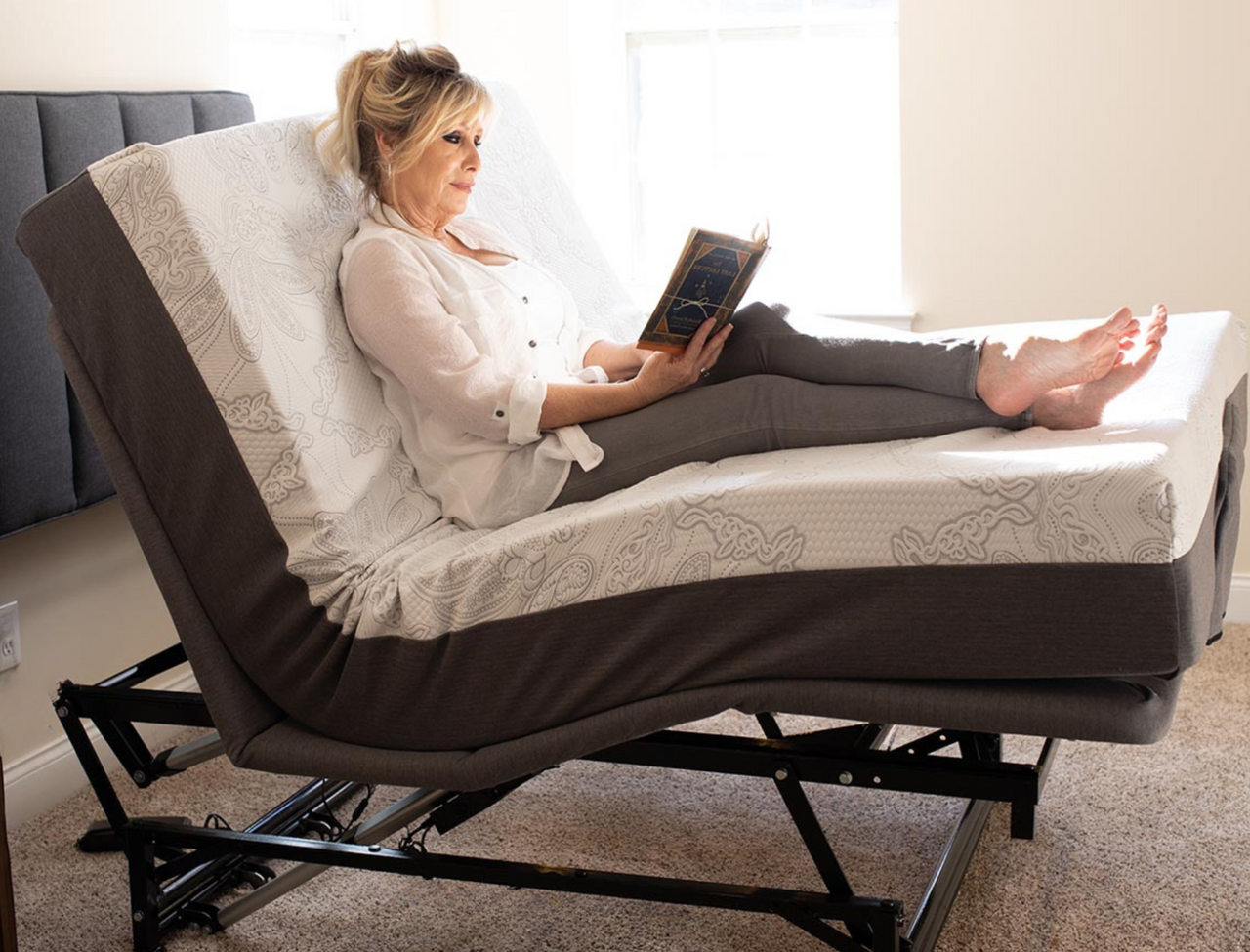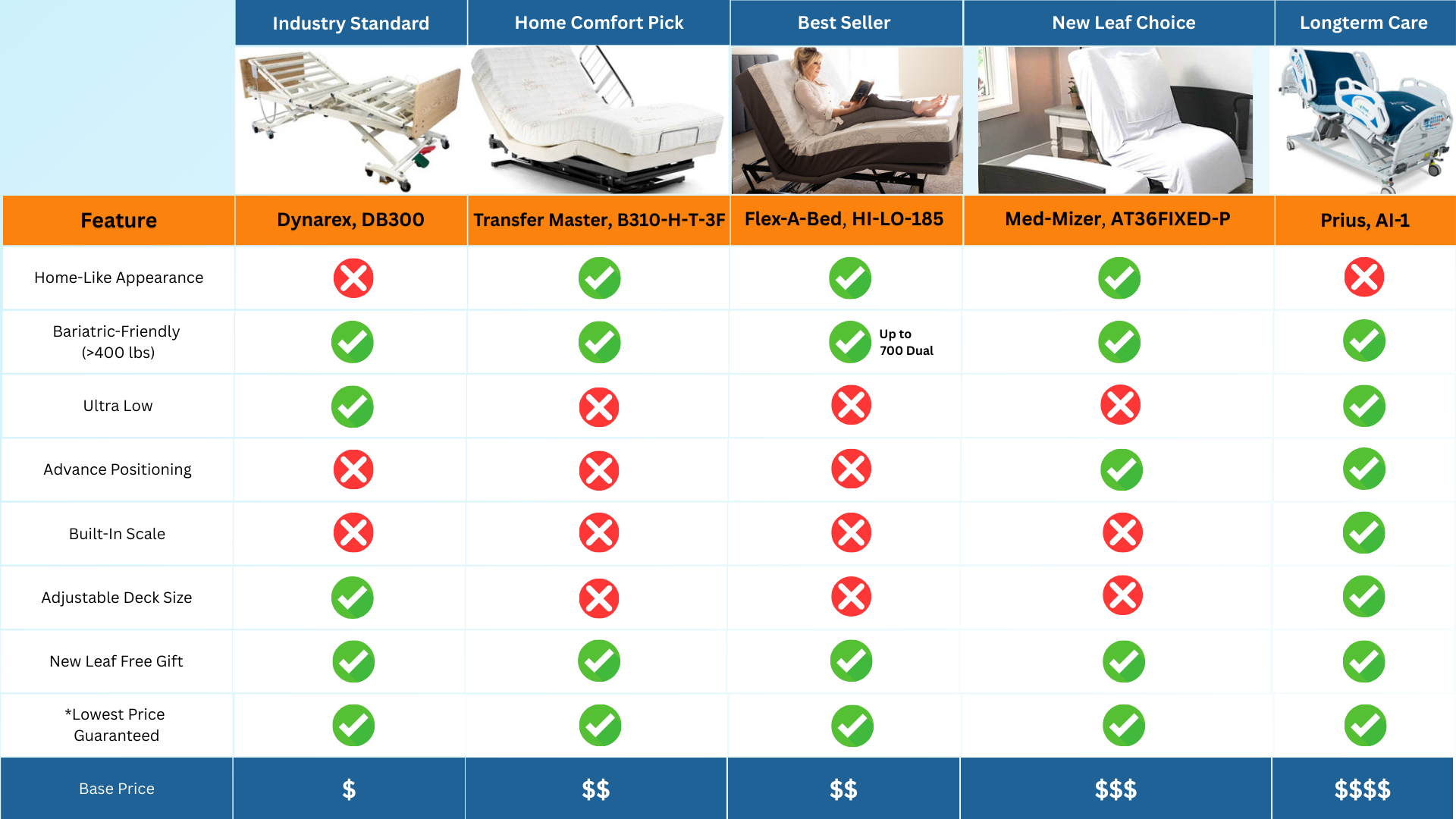Manual vs. Electric Hospital Beds for Home: Which Is Right for You?
Posted by Operations New Leaf on Aug 25, 2025
Choosing between a manual and an electric hospital bed for home use can significantly impact comfort, convenience, and overall quality of life for both patients and caregivers. Each type of bed offers unique features, suited to different needs, levels of independence, and budget considerations. By understanding the distinctions between manual and electric beds, you can make an informed choice that supports ease of use, independence, and efficient care.
 For those who require frequent repositioning or want the independence of adjusting the bed themselves, an electric bed may be ideal. However, manual beds remain a practical choice, particularly for those on a budget or with caregiver support readily available. Let's explore the key differences, features, and considerations for both types of beds.
For those who require frequent repositioning or want the independence of adjusting the bed themselves, an electric bed may be ideal. However, manual beds remain a practical choice, particularly for those on a budget or with caregiver support readily available. Let's explore the key differences, features, and considerations for both types of beds.
Introduction to Bed Operation Types
Understanding Manual Hospital Beds
 Manual hospital beds are operated through a hand-crank mechanism that adjusts the head, foot, or height of the bed. Adjustments are made by physically turning cranks, which can be time-consuming and requires some effort. While this may limit the ease of adjustments, manual beds are typically more affordable and have fewer electronic components that could require maintenance.
Manual hospital beds are operated through a hand-crank mechanism that adjusts the head, foot, or height of the bed. Adjustments are made by physically turning cranks, which can be time-consuming and requires some effort. While this may limit the ease of adjustments, manual beds are typically more affordable and have fewer electronic components that could require maintenance.
Manual beds are often chosen for their simplicity and cost-effectiveness. They provide essential support without additional features, making them ideal for individuals who don’t need frequent adjustments or have caregivers to assist them when needed.
Understanding Electric Hospital Beds
 Electric hospital beds are powered by a motor, allowing the user or caregiver to adjust the bed’s height and positioning with the press of a button. This feature is particularly useful for individuals who need frequent repositioning or have limited mobility, as it enables them to make adjustments independently and with minimal effort.
Electric hospital beds are powered by a motor, allowing the user or caregiver to adjust the bed’s height and positioning with the press of a button. This feature is particularly useful for individuals who need frequent repositioning or have limited mobility, as it enables them to make adjustments independently and with minimal effort.
 Electric beds offer greater convenience and flexibility, as users can control their positioning without relying on assistance. This independence can be a game-changer for patients, giving them more control over their comfort and reducing the physical strain on caregivers.
Electric beds offer greater convenience and flexibility, as users can control their positioning without relying on assistance. This independence can be a game-changer for patients, giving them more control over their comfort and reducing the physical strain on caregivers.
Manual vs. Electric Bed Features
Adjustable Positions and Mechanisms
Both manual and electric beds provide head, foot, and height adjustments, but the method of operation varies significantly. With manual beds, adjustments are made by turning cranks that raise or lower different sections of the bed. Electric beds, however, use electric controls that make these adjustments effortless and quick, which can be especially beneficial for those who need regular repositioning throughout the day.
For users with limited strength or those at risk of injury from physical exertion, electric controls provide a safer, more accessible option. Manual beds, while requiring more effort, are still functional and can be ideal for individuals who do not need to adjust frequently or have consistent caregiver support.
Power Source and Maintenance
Electric beds depend on a power source, typically plugged into a wall outlet. This reliance on electricity offers convenience but requires access to a reliable power supply. Manual beds, on the other hand, do not require power, making them a reliable choice during power outages or in locations without easy access to electrical outlets.
When it comes to maintenance, manual beds are often simpler and require fewer repairs, as they lack the electronic components found in electric beds. Electric beds may occasionally need maintenance to address motor or electrical issues, so it's worth considering both convenience and upkeep when choosing between the two types.
Pros and Cons
Advantages of Manual Hospital Beds
- Cost-Effective: Manual beds are typically more affordable than electric beds, making them an excellent choice for those on a budget.
- Simple Maintenance: With no electronic parts, manual beds are easier to maintain and less likely to require repairs.
- Reliable in Power Outages: Manual beds function independently of electricity, making them reliable during outages or in settings where electricity access is limited.
However, manual beds can be physically demanding, requiring effort to adjust. They are best suited for individuals who do not need frequent adjustments or who have consistent caregiver support.
Advantages of Electric Hospital Beds
- Ease of Use: Electric beds allow users to adjust the bed effortlessly, offering convenience and independence for individuals with limited strength or mobility.
- Enhanced Comfort: With quick, easy adjustments, electric beds provide greater comfort for patients who need frequent repositioning.
- Reduced Caregiver Strain: For caregivers, electric beds minimize physical strain, as they do not require manual adjustment.
The primary drawback of electric beds is their reliance on electricity, which can make them less reliable during power outages. Additionally, electric beds tend to be more expensive than manual models, potentially placing them out of reach for some budget-conscious buyers.
Choosing Based on Needs and Budget
Assessing Patient Independence and Mobility
If the patient has the physical strength to adjust the bed and does not need frequent repositioning, a manual bed may be a suitable and cost-effective option. However, for individuals who value the ability to adjust their bed independently or need regular positional changes, an electric bed can offer enhanced comfort and convenience.
Considering Caregiver Availability
If a caregiver is available to assist with adjustments, a manual bed may be a practical choice, as caregivers can handle the physical demands of repositioning. However, if the patient is often alone or the caregiver’s physical abilities are limited, an electric bed may be essential to reduce strain and improve ease of care.
Balancing Budget and Features
For individuals on a strict budget, manual beds provide the essential features without added costs. However, if the budget allows, an electric bed’s additional comfort and ease of use can be well worth the investment, particularly for individuals with chronic conditions or significant mobility challenges.
Final Thoughts
When choosing between a manual and electric hospital bed for home use, the decision ultimately comes down to patient needs, independence, and budget. Manual beds offer an affordable, low-maintenance solution for those with consistent caregiver support, while electric beds provide unparalleled convenience, allowing users to adjust their positions easily and independently.
An electric bed can improve daily comfort and quality of life, particularly for patients who need frequent repositioning. Meanwhile, a manual bed remains a reliable, cost-effective choice, especially for short-term needs or situations with caregiver assistance. By carefully considering the individual’s requirements and preferences, you can select a bed that ensures a comfortable and supportive home care environment.



